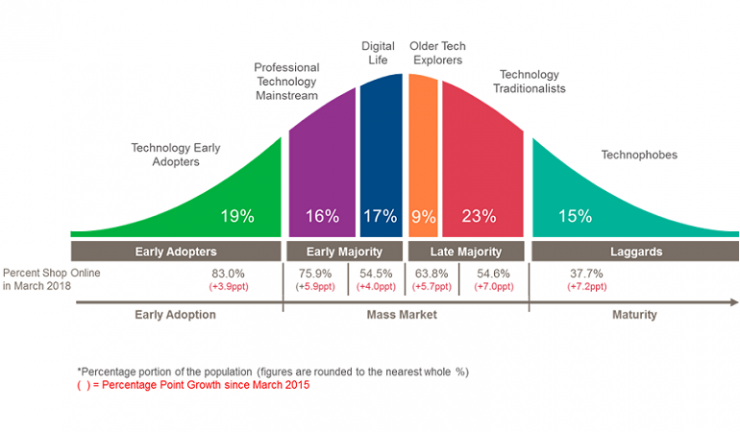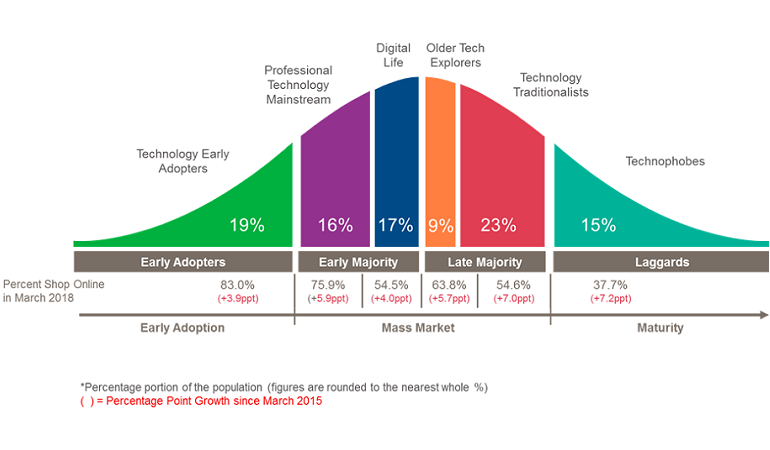Technophobes leading the way.
More Australians are shopping online, 9.46 million in fact, half a million more than a year ago.
According to the latest data from Roy Morgan while all demographics recorded positive growth, the strongest shift is coming from the less affluent, those classified as ‘light spenders’, and those belonging to the value segments – ‘fairer deal and ‘something better’ – all recording higher growth rates of internet shopping between March 2015 and March 2018 than their wealthier counterparts.
Late adopters of the technology community are now the highest growing demographic for online shopping with technology traditionalists (those who will only try a new technology when it’s become mainstream) recording a growth of 7ppts, while technophobes grew by 7.1ppts, the highest of all segments. Technology early adopters however had a growth of only 3.9ppts, and digital life (mostly tech-savvy students and young part-time workers) just 4ppts.
Growth in online shopping among late technological adopters means more for some industries than others. The industries in which technophobes are most prominent include pet products (9.8%), health & beauty (9.6%), automotive (9.5%), fashion (9.2%) and home & garden (9.1%). Technology traditionalists are most prominent in pet products (27.1%), automotive (25.1%), baby products (25.0%), home & garden (22.0%) and health & beauty (21.3%).

As technology becomes more readily available and easy to use, and as industry giants such as Amazon begin catering to the local Australian market, it is predicted that an even greater share of the market will find itself being traded online, Roy Morgan CEO, Michele Levine said.
“This trend in the growth of online shopping demographics is significant. Those demographics which have less disposable income, those who consider themselves light spenders and those who shy from new technology are the strongest growing segments. This may be surprising as wouldn’t those with more money to spend be flocking to online shopping?”
The truth is they already are with 80.1% of people in the highest income quintile purchasing at least one product online in an average three months, as well as 83% of technology early adopters.
Historically, they’ve been the ones at the front of the online shopping movement, with the technology and dollars to take advantage of being able to buy just about anything with a few clicks, Levine said.
“Now, however, the waters have been tested, the process refined, and warehouses are starting to become local. Previous barriers to entry for lower income demographics have been broken down as the cost of technology becomes reasonable and shipping, mostly from America or parts of Asia, has fallen as large retail giants move in on the Australian market. Also, devices with intrinsic internet usage and websites with comprehensive user interfaces allow technophobes an easier passage into online shopping,” she said.
These changes are being seen in the growth of markets where these types of customers are prevalent, namely health & beauty and pet products, fueled in part by increased online participation by the technology traditionalists and technophobes.
“Given that still less than half of those lower income earners and late tech adopters are shopping online at least semi-frequently, businesses that move early to take advantage of this currently under-represented demographic may well benefit in future as the growth of those demographics onto the online marketplace continues to rise,” Levine said.

